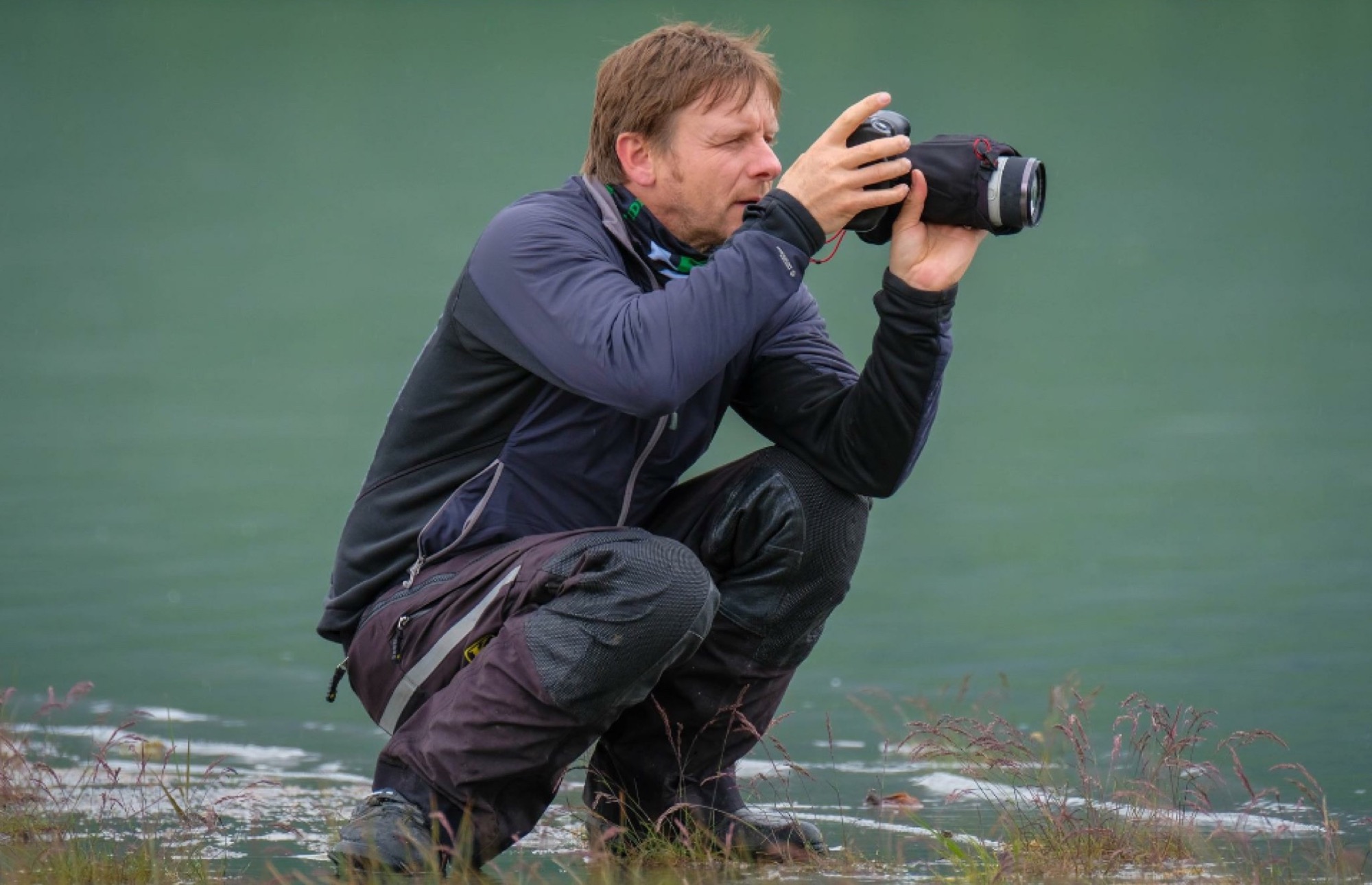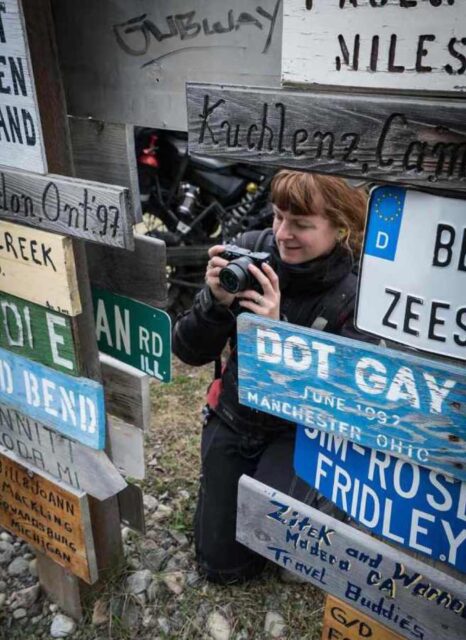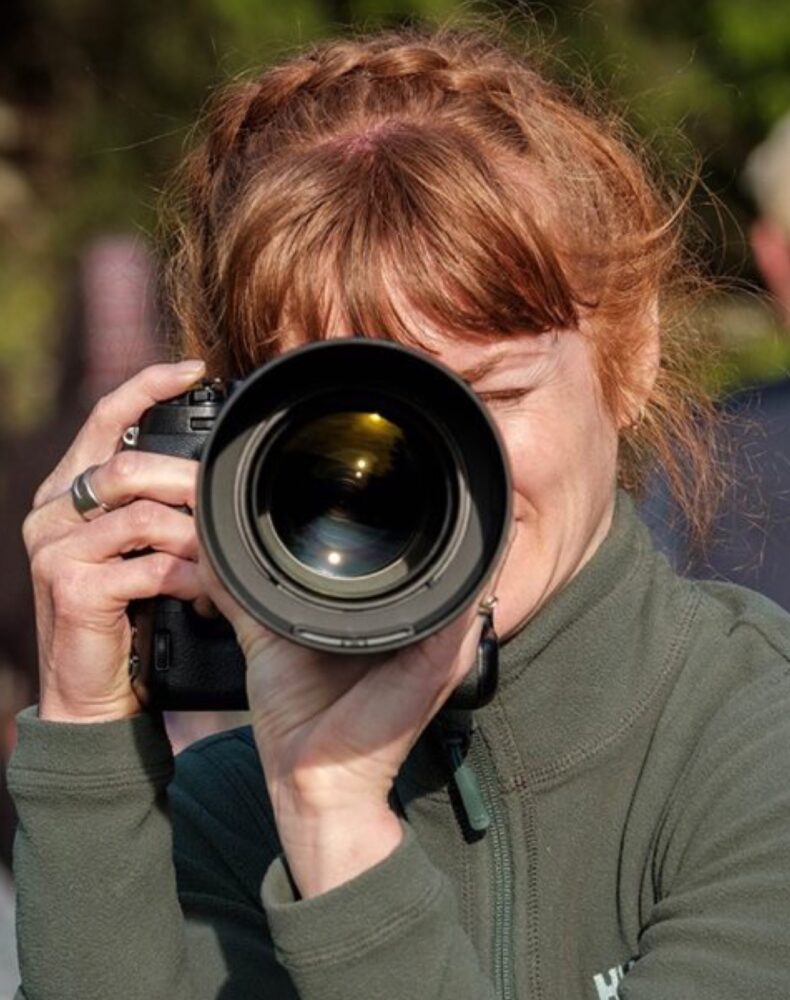Words By Lisa Morris, photography by Jason Spafford.
Before setting off on your next getaway, road trip, or vacation of a lifetime, you may be in a quandary as to which camera to invest in. Do you really need to spend $5,000 on a professional camera with an array of lenses, a complete set of ND filters, a tripod, and the latest editing suite to match? The answer is no, absolutely not—particularly if you just want to have fun with photography and capture feel-good memories.
That said, choosing a camera phone, a compact camera, or a digital single-lens reflex (DSLR) camera can pose a challenge. Not only from a financial standpoint, but it will also determine what kinds of shots you will be capable of capturing. This guide cuts through all the marketing hype to highlight the most important differences between each camera type—thereby helping you to decide which one is best for you and your shooting style.

Smartphone Camera
The concept behind camera phones is that if you are caught without a digital camera, your camera phone will step in. When taking a picture of something, your smartphone’s camera will capture the light emerging from it. A convex lens inside the camera will focus the arriving light onto a complementary metal-oxide-semiconductor sensor, which acts as an “electronic eye.” The lens focuses light entering onto the sensor in the camera. The sensor then creates a digital image from the inbound light.

Pros
Convenience: You rarely leave home without your smartphone, which means you’re never left short. (That is, as long as it’s charged.)
Cost: Cheaper than buying a mobile phone, a DSLR, and a video camera
Quality: The current camera phones are of exceptional quality; their ability to produce high-resolution pictures straight off the back enables you to crop the image and capture a close-up of the wildlife from afar.
Functionality: Most camera phones offer red-eye reduction, auto-focus, and zoom, among additional features, such as a video camera, including time-lapse and slow motion. Perfect for capturing the moving reminiscences when something catches your eye.
Versatility: In addition to taking regular pictures, you can shoot panoramas. And in burst mode, rapid-fire shots allow you to pick out your favourite action shot.
Post-production: The built-in editing features will help to enhance your photos.
Multimedia: With WiFi everywhere, it couldn’t be simpler to send your pictures to friends and family, regardless of how far.
One-stop shop: Along with your camera, your smartphone will perform many other tasks and saves you having to carry multiple items.
Cons
Cost: The latest camera phones can be pricey; if you want the higher resolution and added features, you have to pay for it.
Capability: Less capability than a digital camera in terms of depth of field, dynamic range, shutter speed, aperture priority, etc.
Zoom: Zooming in before taking the shot comes with a trade-off—your image will lose quality, be less sharp, and more grainy (also known as image noise).
Tips
Housekeeping: Leave plenty of space on your camera phone for filling it up with a plethora of images—you’re likely to become trigger happy at some point!
Go steady: Try and keep the camera phone steady to ensure your pictures are in focus.
Rule of Thirds: Applied by aligning a subject with the guidelines and their intersection points, placing the horizon on the top or bottom line, or allowing linear features in the image to flow from section to section. Namely, avoid putting the subject in the centre of the shot as it’s a less attractive composition. Keep the subject slightly off-centre.
Camera/editing/filter apps: To help you shoot better pictures, consider downloading a photo application. Camera 360, Pixlr Express, and PicsArt (for Android) or Camera+, Snapseed, and VSCO (for iOS) are examples of applications that facilitate taking pictures, editing them, applying filters. Plus, you get to publish them to your social media sites, all within the app. There is a bevy of free presets, as well as manual adjustment sliders, bringing you as close to raw editing as possible.
Post-production continued: When tweaking your pictures, it’s worth remembering that no amount of editing can turn a bad photo into a good one. So always start out with the best image possible. Avoid over-processing the picture; it can soon look like the place you visited was on steroids when the colours are saturated.
Power: An external battery pack will top up the charge in your phone; constant use of the camera and/or video can deplete the power rapidly on some models.
Accessories: Consider investing in a decent case, one that will protect it if dropped or rained on.
Compact Camera (Point and Shoot)

Pros
Compact: Easy to carry, hold, and store. Their diminutive size can make a difference if you don’t want to lug around a big DSLR with several lenses.
User-friendly: The compact will shoot normal photos with “point and shoot” ease.
Inexpensive: It’s the cheapest entry into high-dynamic-range photography; you can buy one for about $100 and start your trip without having to take out a second mortgage.
Light: Ability to use an external flash unit
Multi-purpose: You can use point-and-shoot during the day and HDR at sunset. They also make wonderful learning platforms to teach children about photography.
Functionality: Greater range of pre-programmed creative modes than DSLRs and no mirror/shutter mechanism that can fail after approximately 10-100K shots
RAW format: RAW file format support
Zoom: Most models have an electronic zoom, which is great for getting close-ups of your subject.
Results: Compacts produce outstanding image quality for printing purposes.
Cons
High Dynamic Range: HDR refers to a scene that includes both bright and dark elements—the sun, reflecting off the water, with deep shadows in the tree lines, for instance. HDR isn’t quite so automatic with a compact camera, although this isn’t a deal-breaker.
Capability: Less range and scope compared to a DSLR.
Tips
Zoom: When zooming in, set the shutter speed high enough to deliver sharp images.
Sustained usage: Carry spare batteries and sufficiently-sized memory cards to keep up with you.
DSLR (Digital Single-lens Reflex) Camera

Pros
Autofocus: Faster camera autofocus
Choice: Greater choice of interchangeable lenses
Control: Gives complete manual exposure control
Frame rate: Better maximum frame rate, which enables you to grab the “money shot.”
Future-proofing: Capacity to supplant just the camera body while retaining one’s arsenal of lenses
Light: Means to use an external flash unit
Long exposures: Capability to take long exposures more than 15-30 seconds (via manual or bulb mode)
Results: First-rate image quality—high megapixels mean larger prints that are pin-sharp
Shutter lag: Smaller shutter lag between pressing the shutter and starting the exposure
Speed: A more comprehensive range of ISO speed settings
Zoom: Possession of manual zoom control by twisting the lens
Cons
Cost: Most expensive option
Inconvenience: Less portable, heavier, and bulky
Tips
Lens: Consider something like a 28-300mm lens as it’s a versatile travel lens.
Shutter speed priority: Maintain high shutter speed while shooting and in transit, namely, on anything that’s moving. If you’ve got 100mm focal length, the rule of thumb is that you need to double the shutter speed to a minimum of 1/200 second. This will prevent camera shake. When you want to capture a tail shot, for example, opt for 1/250 second. Big action shots require at least 1/1000 second to keep your images sharp.
Sustained usage: Carry spare batteries and sufficiently-sized memory cards to keep up with you.
Accessories: Consider a neoprene cover for the DSLR and lens for when it rains.
Post-production: To get the most out of your shots, get an editing suite such as Adobe Photoshop, Lightroom, or Aperture.
Conclusion
The preference between each camera type chiefly comes down to one of (a) flexibility and the potential for higher image quality versus (b) portability and simplicity.
Camera phones and compact cameras are smaller, lighter, less expensive, and less conspicuous. Compacts are the middle ground between the smartphone and DSLR, a happy compromise. That said, DSLRs boast a shallower depth of field, a greater range of subject styles, and higher image quality. Compact cameras are better for learning photography since they cost less, simplify the shooting process, and are a good all-around option for capturing many types of scenes out of the box. SLRs are better suited to specific applications, foremost when size and weight aren’t important, and the cost isn’t an issue.

It’s worth throwing into the melting pot the option of a mirrorless camera. It’s a digital camera that accepts different lenses. Also called a mirrorless interchangeable-lens camera (MILC), hybrid camera, and compact system camera (CSC), the body is thinner than a DSLR. They have the portability of a compact but the quality of a DSLR. Pleasingly, they are less expensive than DSLRs, so hemorrhage your budget they won’t.
You’ll do your own research, but ultimately, the choice is yours. Whichever camera ensemble you go for, you’re capturing experiences and preserving the big moments forever, being able to travel back in time. Just don’t forget to put the camera down and take it all in.
Our No Compromise Clause: We carefully screen all contributors to make sure they are independent and impartial. We never have and never will accept advertorial, and we do not allow advertising to influence our product or destination reviews.


